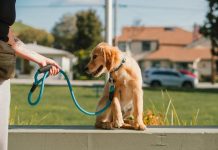Welcoming a new puppy into your home is a joyous occasion, filled with boundless energy, wagging tails, and the promise of a lifelong companionship. However, amidst the excitement, it’s important to remember that your new furry friend is a blank slate, eager to learn and adapt to their new environment. Establishing a consistent training routine is crucial not only for your puppy’s development but also for building a harmonious relationship. In this guide, we’ll walk you through the essential steps to create a puppy training routine that truly sticks, ensuring your little one grows into a well-mannered and happy dog. With patience, love, and a sprinkle of perseverance, you’ll be well on your way to nurturing a confident and obedient companion.
Understanding Your Puppys Unique Needs
Every puppy comes with their own set of quirks and needs, much like humans do. Understanding these unique characteristics is the cornerstone of building a successful training routine. Puppies have different energy levels, attention spans, and socialization requirements, and acknowledging these differences is crucial for effective training. Observe your puppy closely to identify their specific behaviors and preferences. Are they more energetic in the morning or the evening? Do they respond better to treats, toys, or verbal praise? These observations will help tailor a routine that fits your puppy’s personality.
- Energy Levels: Adjust playtime and training sessions based on when your puppy is most active.
- Attention Span: Keep sessions short and sweet to match your puppy’s concentration capabilities.
- Socialization Needs: Introduce new experiences at a pace that feels comfortable for your puppy.
By recognizing and adapting to these unique needs, you not only foster a nurturing environment but also strengthen the bond with your puppy, making the training process more enjoyable for both of you.
Establishing a Consistent Schedule
Crafting a reliable routine is crucial for effective puppy training, as it helps your furry friend understand expectations and builds trust. Begin by setting a daily timetable that aligns with your lifestyle and stick to it as much as possible. Puppies thrive on consistency, so aim to schedule feeding, bathroom breaks, playtime, and training sessions at the same time each day. Consider integrating short, focused training exercises throughout the day, as puppies have short attention spans. This not only reinforces learning but also keeps them engaged and excited.
- Morning: Start with a bathroom break, followed by breakfast and a short training session focusing on basic commands like “sit” or “stay”.
- Midday: Schedule playtime and another bathroom break, then incorporate a brief training session that introduces new commands or reinforces previous lessons.
- Evening: After dinner, allow for a longer play session, and conclude with a final bathroom break and training exercise.
By maintaining a structured routine, your puppy will learn to anticipate activities, reducing anxiety and creating a harmonious environment. Remember, patience and persistence are key. Adjust as needed to suit your puppy’s needs and your household dynamics, and soon you’ll find that the routine becomes second nature for both of you.

Positive Reinforcement Techniques
Incorporating positive reinforcement into your puppy’s training routine can significantly enhance their learning experience and foster a loving bond between you both. Reward-based training not only makes the process enjoyable for your pup but also encourages them to repeat desirable behaviors. Here are some effective techniques to get you started:
- Use Treats Wisely: Choose small, tasty treats that your puppy loves. Offer them immediately after your pup performs the desired action to create a clear connection between the behavior and the reward.
- Offer Praise: A gentle, cheerful voice saying “Good job!” or “Well done!” can be as motivating as treats. Ensure your tone is enthusiastic and genuine.
- Incorporate Play: For some puppies, a quick game of fetch or tug-of-war can be a fantastic reward. Tailor the play to what your pup enjoys most.
- Be Consistent: Consistency is key. Make sure all family members are on the same page with training methods to avoid confusing your puppy.
- Keep Sessions Short: Puppies have short attention spans, so keep training sessions brief and fun, gradually increasing duration as they grow.
By integrating these techniques, you create a positive and engaging learning environment that motivates your puppy to learn and thrive, making training a delightful experience for both of you.

Overcoming Common Training Challenges
Training a puppy can be a rewarding experience, but it’s not without its hurdles. One common challenge is consistency. It’s essential to establish a routine that your puppy can rely on. Consistency involves sticking to the same commands, signals, and training times. Puppies thrive on repetition, so ensure that everyone involved in the training process is on the same page. This includes using the same words for commands and rewarding good behavior promptly. Consistency helps in creating a stable environment where your puppy knows what to expect, which in turn accelerates the learning process.
- Patience: Remember that each puppy learns at its own pace. Avoid frustration and maintain a calm demeanor, as your puppy can sense your emotions.
- Distractions: Puppies are naturally curious, so training in a quiet environment at first can help them focus. Gradually introduce distractions as they become more adept.
- Reinforcement: Use positive reinforcement to encourage desired behaviors. Treats, praise, and playtime can be effective motivators.
It’s also crucial to address fear and anxiety. These emotions can hinder your puppy’s ability to learn. Create a safe and comfortable space for training sessions and be mindful of any signs of stress. By tackling these common challenges with patience and understanding, you’ll foster a trusting relationship with your puppy and establish a training routine that truly sticks.
















